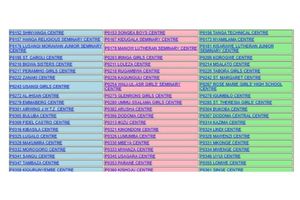EAC dusts off environment protocol after 17 years on the shelf

What you need to know:
- Signed all the way back in 2006, the document has stalled in the ratification process, but a push from the powerful Council of Ministers aims to breathe new life into it.
Arusha. The East African Community (EAC) is finally giving its long-neglected draft Protocol on Environment and Natural Resources a second look.
Signed all the way back in 2006, the document has stalled in the ratification process, but a push from the powerful Council of Ministers aims to breathe new life into it.
"Enough is enough," declared the Council, directing the EAC secretariat to convene a meeting of experts to review the draft and pave the way for ratification.
Legal experts, environmental specialists, and climate change authorities will get their hands dirty with the revision, hopefully clearing the hurdles for its implementation.
Only the original three EAC members – Tanzania, Uganda, and Kenya – signed the protocol in 2006.
While Uganda and Kenya ratified it in 2010 and 2011, respectively, Tanzania remains on the sidelines due to unresolved concerns.
With the EAC now boasting eight member states, the ratification status of the remaining five remains unclear.
The protocol's objective is straightforward: safeguard and manage the region's rich natural ecosystems for sustainable utilization.
From vibrant marine ecosystems to sprawling forests and teeming wildlife, the EAC is blessed with trans-boundary resources that fuel local livelihoods and drive regional economic growth.
These valuable ecosystems face growing threats, and experts warn that inaction could have dire consequences.
Soaring population pressures, unsustainable agricultural practices, and rampant pollution – exemplified by the declining health of Lake Victoria – are pushing these natural treasures towards a tipping point.
The Council of Ministers recognized the urgency, emphasizing that further delay is unacceptable.
This push signifies a renewed commitment to protecting the EAC's environmental jewels and fostering sustainable development across the region.
The EAC isn't stopping there. A regional environmental policy and strategy, accompanied by an action plan, is also in the works.
This comprehensive approach demonstrates a holistic understanding of the challenges and a genuine desire to protect the environment for future generations.
Cooperation in environmental and natural resource management is enshrined in both the EAC Treaty and the Common Market Protocol.
The former binds partner states to ensure sound environmental practices, while the latter highlights the importance of such practices for a thriving Common Market.
The EAC's renewed focus on the dusty protocol and its broader environmental commitments offer a glimmer of hope for the region's fragile ecosystems.
By working together, the member states can harness the power of shared resources for sustainable development and a healthy future for all.


